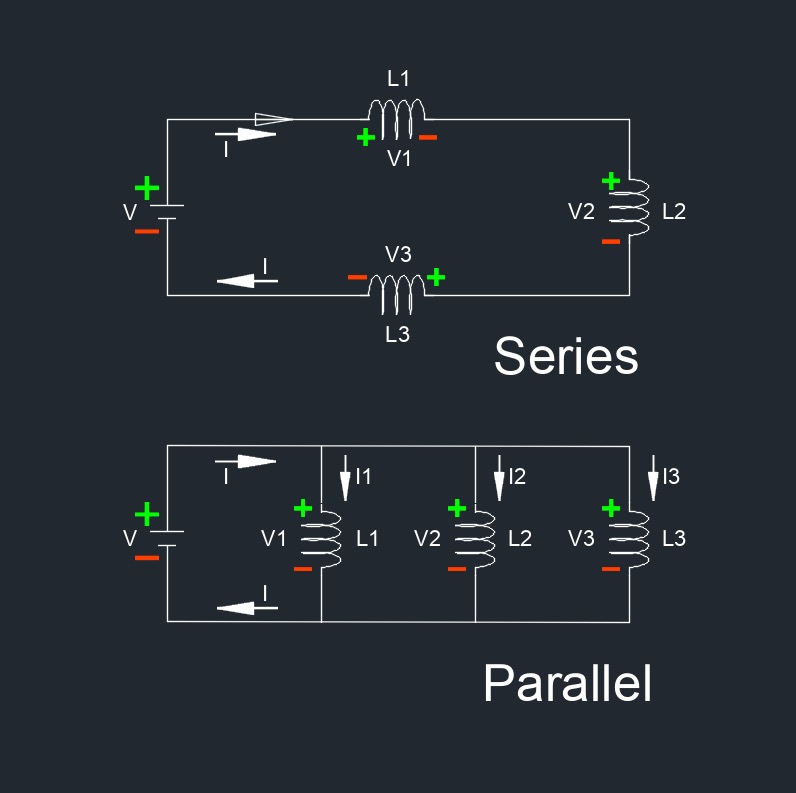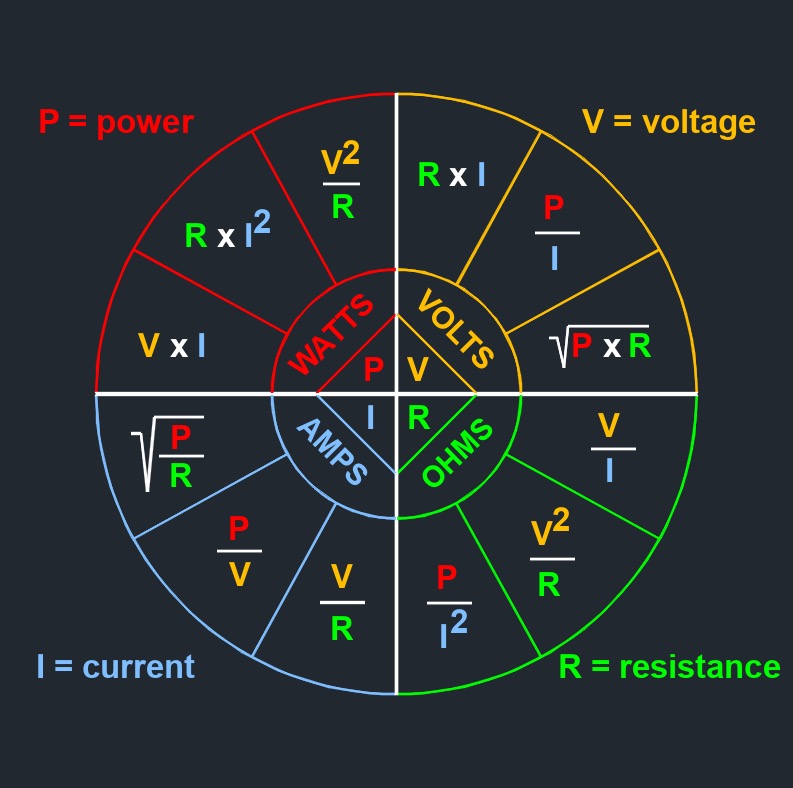Inductor

 Inductor is an electrical component that stores energy in a magnetic field when an electric current passes through it and releasing this stored energy back into the circuit when the current changes. It consists of a coil of wire wound around a core made of a ferromagnetic material such as iron or ferrite. When current flows through the coil, a magnetic field is generated around it, and energy is stored in this magnetic field.
Inductor is an electrical component that stores energy in a magnetic field when an electric current passes through it and releasing this stored energy back into the circuit when the current changes. It consists of a coil of wire wound around a core made of a ferromagnetic material such as iron or ferrite. When current flows through the coil, a magnetic field is generated around it, and energy is stored in this magnetic field.
Inductors are used in electronic circuits for various purposes, including energy storage, filtering, signal processing, and impedance matching. They are particularly useful in applications where changes in current need to be regulated or smoothed out over time. The inductance of an inductor depends on factors such as the number of turns in the coil, the shape of the coil, and the magnetic properties of the core material. Inductors can also exhibit other characteristics, such as resistance and capacitance, which can affect their performance in a circuit. The resistance of an inductor, known as its series resistance or DC resistance, dissipates energy in the form of heat and can limit the efficiency of the inductor. Additionally, inductors can have parasitic capacitance, which can affect their behavior at high frequencies.
How Inductors Work
- Generating Magnetic Field - When current flows through the wire coil of an inductor, it generates a magnetic field around the coil according to Ampere's law. The strength of this magnetic field is directly proportional to the current flowing through the coil.
- Inducing Voltage - According to Faraday's law of electromagnetic induction, when the current flowing through the coil changes, it induces a voltage across the coil. This induced voltage opposes the change in current, in accordance with Lenz's law.
- Storing Energy - The induced voltage creates an opposing electromagnetic force that resists the change in current flow. As a result, energy is stored in the magnetic field surrounding the coil. This stored energy can be released back into the circuit when the current flowing through the inductor changes.
- Behavior with Alternating Current - In AC circuits, where the current continuously alternates direction, inductors have unique behavior. They resist changes in the current flow, effectively slowing down the changes in current. This property is utilized in various applications such as filters, transformers, and impedance matching.
- Inductive Reactance - Inductors also exhibit a property known as inductive reactance, which is the opposition to the flow of alternating current. It is proportional to both the frequency of the alternating current and the inductance of the coil.
- Applications - Inductors find applications in various electrical circuits, such as filters to block certain frequencies, in power supplies to smooth out voltage fluctuations, in transformers to change voltage levels, and in electronic oscillators to generate oscillations at specific frequencies.
Inductor Circuit formula |
||
| \(L \;=\; V_L \;/\; (dI \;/\; dt) \) (Inductor) | ||
| \(L_t \;=\; L_1 + L_2 + L_3 \; + ... + \; L_n \) (Series Circuit) | ||
| \((1\;/\;L_t) \;=\; (1\;/\;L_1) + (1\;/\;L_2) + (1\;/\;L_3) \; + ... +\; (1\;/\;L_n) \) (Parallel Citcuit) | ||
| Symbol | English | Metric |
| \(L\) = inductance | \(H\) | \(kg-m^2\;/\;s^2-A^2\) |
| \(V_L\) = electromotive force | \(V\) | \(kg-m^2 \;/\; s^3-A\) |
| \(dI\) = current change | \(I\) | \(C \;/\; s\) |
| \(dt\) = time change | \(sec\) | \(s\) |
Inductor Types
Inductors are passive electronic components that store energy in the form of a magnetic field when current flows through them. They are widely used in various electrical and electronic circuits for purposes such as filtering, energy storage, impedance matching, and signal processing. There are several types of inductors, each with specific characteristics suited for different applications. The choice of inductor type depends on factors such as the desired inductance value, frequency of operation, current and voltage ratings, size constraints, and cost considerations.
- Air-Core Inductor - These consist of a coil of wire wound around a non-magnetic core, typically made of plastic, ceramic, or another non-conductive material. They have no magnetic core material, which minimizes magnetic interference and distortion. Air-core inductors are used in applications where high-frequency operation, low magnetic coupling, and low core losses are required, such as in radio frequency circuits, high-frequency filters, and tuning circuits.
- Ferrite-Core Inductor - This inductor use a core made of ferrite, a type of ceramic material containing iron oxide. Ferrite cores provide high magnetic permeability, allowing for high inductance values in a compact size. They are commonly used in power supply circuits, noise suppression filters, RF chokes, and various other applications requiring high inductance and high-frequency operation.
- Iron-Core Inductor - These use a core made of laminated iron or iron powder. Iron-core inductors offer high magnetic permeability and are capable of handling higher power levels compared to air-core and ferrite-core inductors. They are commonly used in power supply circuits, transformers, filters, and various electromagnetic devices.
- Toroidal Inductor - This inductors consist of a coil of wire wound around a toroidal (doughnut-shaped) core. Toroidal cores provide high magnetic coupling and lower electromagnetic interference compared to other core shapes. Toroidal inductors are used in applications where compact size, low electromagnetic radiation, and high efficiency are required, such as in audio equipment, power supplies, and RF circuits.
- Multilayer Chip Inductor - These are surface-mount inductors that consist of multiple layers of coil windings sandwiched between ceramic layers. They are compact, lightweight, and suitable for high-frequency applications. Multilayer chip inductors are widely used in mobile devices, wireless communication devices, and other compact electronic devices.
- Variable Inductor - Also called adjustable inductors or variometers, allow for adjustment of inductance within a certain range. They are used in applications where tunable or variable inductance is required, such as in radio tuning circuits, impedance matching networks, and analog filters.

Tags: Electrical

